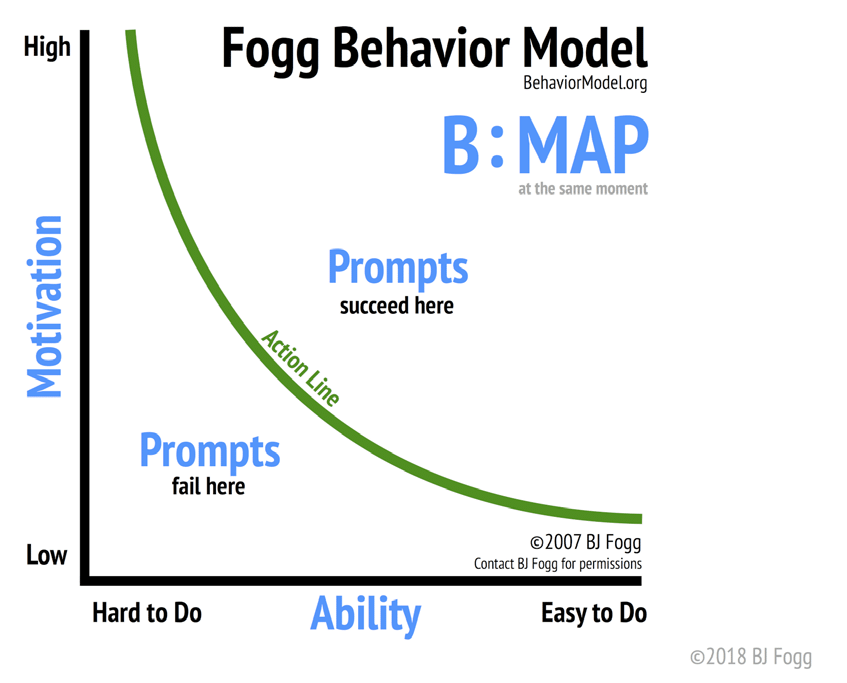PPC ads are created to move the sales needle, either through high CTR, which increases the number of possible leads, or outright sales.
If the ad isn’t making any of these two things: raising awareness and sales, then it is a failure.
Marketers are increasingly turning to psychology practices to understand how to create better engagement on their PPC ads, and to convert more customers.
HUMANS ARE PSYCHOLOGICAL BEINGS
Therefore, even a simple grasp of behavioural psychology can help you to design and plan a PPC ad campaign and write effective ad copy that converts. Psychology and marketing are like tea and cake; they’re made for each other.
In this article, we’ll be showing you some behavioral psychology knowledge that you can apply to your PPC marketing to reach more people, increase CTR, and make more sales.
But, does behavioral psychology and marketing, especially pay per click ads, have anything in common? In fact they have a whole lot in common.
This article will help you understand how to apply the right psychological knowledge to increase your CTR effectively.
6 Psychology Tips To Help You Increase CTR on PPC Ads
1. Use the FOGG BEHAVIOUR MODEL
The FOGG Behaviour model is a behavioral psychology model developed by Dr. B.J Fogg from Stanford University.
The model predicted the series of events that must happen before a person is motivated to buy. According to the model, for a person to ‘buy right now,’ there needs to be motivation (a desire to buy), ability (ability to act), and prompt (trigger to act).
These three simple actions must all be in the right doses, must be combined well before people buy things.
Behaviour occurs (when) = Motivation + ability + prompt (usually at the same time)

MOTIVATION:
When creating your PPC ads, the ad’s copy must be able to spark a desire in people to act, give them an ability to act, and a prompt that will trigger them to take action.
One of the best ways to spark curiosity is to offer value to the customers. These values can come in the form of discounts or offers that meet the customers’ specific needs.
For example, offering a twenty percent discount to customers in your ad copy can increase your CTR massively.
Also, your ad copy can include other valuable options for customers to choose from.
One such offer could be an offering of special packages for a particular segment of your customer base. Let’s say you sell shoes for men. Your ad copy could include a special men’s footwear for winter. This motivation, if targeted to men during the cold season, could spark these men to take action and buy.
Digital marketing has become the cornerstone method of communication with potential customers. As this has become more prevalent, so has the scope of digital marketing managers – PPC ad managers in particular. They oversee different ad campaigns for agencies that may struggle to keep track of their campaign performance.
These metrics can be difficult to track without the right tools at your disposal. Facebook ad reporting, Adwords, and other PPC platforms have tools that make cross-channel campaign assessment a breeze. You may wish to check them out.
ABILITY:
Second, the right ability to act, is an integral part if you want your ads to convert. The right ability could be providing customers with a faster delivery option, a better price, a better response time or some other added value compared to others.
Your ad copy for your PPC should make a promise, a good one that will inspire customers to click on the ad.
For example, if you sell books, you could add a two-hours delivery time after order in your copy. Although the customer might not be willing to act right away, the fast delivery added to your copy will motivate him or her to click on the ad.
PROMPT:
And lastly, a PPC ad copy must have a prompt. A prompt is what we call a CALL TO ACTION (CTA). You can design a beautiful PPC ad, get the right motivation and ability to act in your ad copy, but without a prompt, it’s bound to fail.
People need to know what you want them to do. A call to action should be firm, distinct, and apparent.
Whether it’s a colorful CTA button or a direct call to action with strong words, ensure you have a CTA at the end of your PPC ad.
It could be words like:
- BUY NOW
- LIMITED TIME OFFER
- GET YOUR FREE GUIDE
- 20% OFF TODAY ONLY
Whatever words you choose to use for the ads, make sure you invite your customers to take action.
2. Be Emotional In Your Ads

Humans are emotional beings, so appeal to those emotions.
Many of us are influenced by the emotional connections we can make with a product. An ad that wants you to donate to a charity will hit you with stats about the number of people who are living without clean water. Those numbers do nothing for our emotions(even if they are shocking).
Instead, they’ll tell you about a child who hasn’t had access to clean water to drink for weeks, and could die any day now.
Or they’ll make the emotional trigger even more personal by adding a name to a person suffering because he or she doesn’t have enough water.
Our emotions are one of the main reasons that we buy what we buy. We back up our emotional acceptance of a product with data (performance, quality) and logic (“I can afford it”).
But in truth, the reason you bought that television was because you felt that the product would improve your life somehow, or you have an affinity with the brand.
So for your PPC ads to have a high CTR, make it personal.
A high CTR could translate to a lower Cost Per Click. And a lower CPC means a better ROI if the leads that those ads attract buy from you.
3. Personalise Your Ad Copy
As marketers we’re always told about personalising all of our communications channels. Why should your PPC ad copy be personalised?
Basically, because we are all selfish people.
Don’t be alarmed. We all are selfish, self-serving humans.
And it isn’t a bad thing.
Your marketing copy should ALWAYS meet the needs of your potential customers.
If you tell me the best materials in the world were used to make your new men’s running shoe, it does nothing for me. Nothing.
How does a running shoe help me?
Oh, it makes the shoe lighter on my feet, allowing me to run more, cover more distance, and make the shoe last longer.
Aha! Now you are telling me how the material used for the shoe benefits me.
Also, as you have noticed, my pronouns aren’t addressed to anyone but YOU; I care about YOU!
Use personal pronouns. It helps customers feel like you are talking to them. And you are talking to them—one person at a time.
4. Use the FOMO (Fear of Missing Out) Formula
Humans are more motivated by fear than they are motivated by gains. People are always afraid of ‘losing.’ The FOMO formula is a tested and trusted method for increasing CTR.
What does FOMO entail?
Make the customers feel like if they don’t get the product that you’re offering within a specific time frame, then they’ll miss out on an incredible, juicy deal.
Make the customer realize, hey, you are going to be left out of something everyone in your social or economic circle is having. You just might be the only person who doesn’t get this. It is almost running out, you better snap this one-time offer before it runs out.
How to do this on your Google Ads PPC campaign?
Use a customised countdown ad extension.
You can make your countdown ad extension as long or as short as you like. A few hours? A few days or weeks? No problem.
5. Peer influence

People are often motivated to buy things when they see that others are buying it.
In an online world where people don’t trust vendors quite so readily, you can increase trustworthiness by adding genuine customer reviews to your PPC ad copies. This is another of the ad extensions you can find in your Google Ads dashboard.
If you wanted to buy a pair of soccer boots, and the vendor doesn’t have any positive reviews on their site, would you still buy?
How about when the reviews from real customers praise specific aspects of the soccer boots, are you still going to buy?
The answer to the first question, I am guessing, is no. while the answer to the second is YES.
Customer reviews, according to PPChero, have a high positive effect on how well your PPC campaigns do. Getting customer ratings and including them in your PPC ads increases the conversion rate by approximately 50%.
What you should never do, however, is to embed fake reviews into your ad
6. Be Creative with Your Repetition
We believe what we see and hear often. We also remember what stands out. Marketing and creating ads is both an art and a science. If you want to increase CTR for your PPC ads, create a crazy, yet creative and catchy ad copy.
Now, nobody is saying you should break the box. No. Creating something bizarre that catches your customers’ eye as well as prompts them to buy from you.
David Ogilvy is often quoted as saying, an ad that doesn’t sell isn’t a good ad copy.
Therefore, while you’re creating an ad copy that resonates with your target audience, one that is easy to remember, ensure it also motivates them to buy.
To be extra effective, have a catchy or memorable phrase, stat or line and repeat, repeat, repeat!
If an ad copy is creative, people will latch on to it.
It could be a slogan in your ad copy. Repeat it!
I am not saying you should beat a dead horse. But a slogan or phrase that crops up regularly can really stick in people’s minds. Catchy phrases that rhyme, for example, is one of the many ways you can be bizarre, creative, and repetitive.
Conclusion
Increasing the CTR of your PPC ad campaigns is an art that is constantly changing, with many technological updates. But, us humans are simple beasts and using these behavioural psychology practices for marketing still offers some great results.
Don’t be afraid to be creative with your PPC ads while still offering irresistible values that trigger the customers’ emotions.
This post was written by Mindaugas Skurvydas, the head SEO honcho at Whatagraph, a digital marketing report platform.
